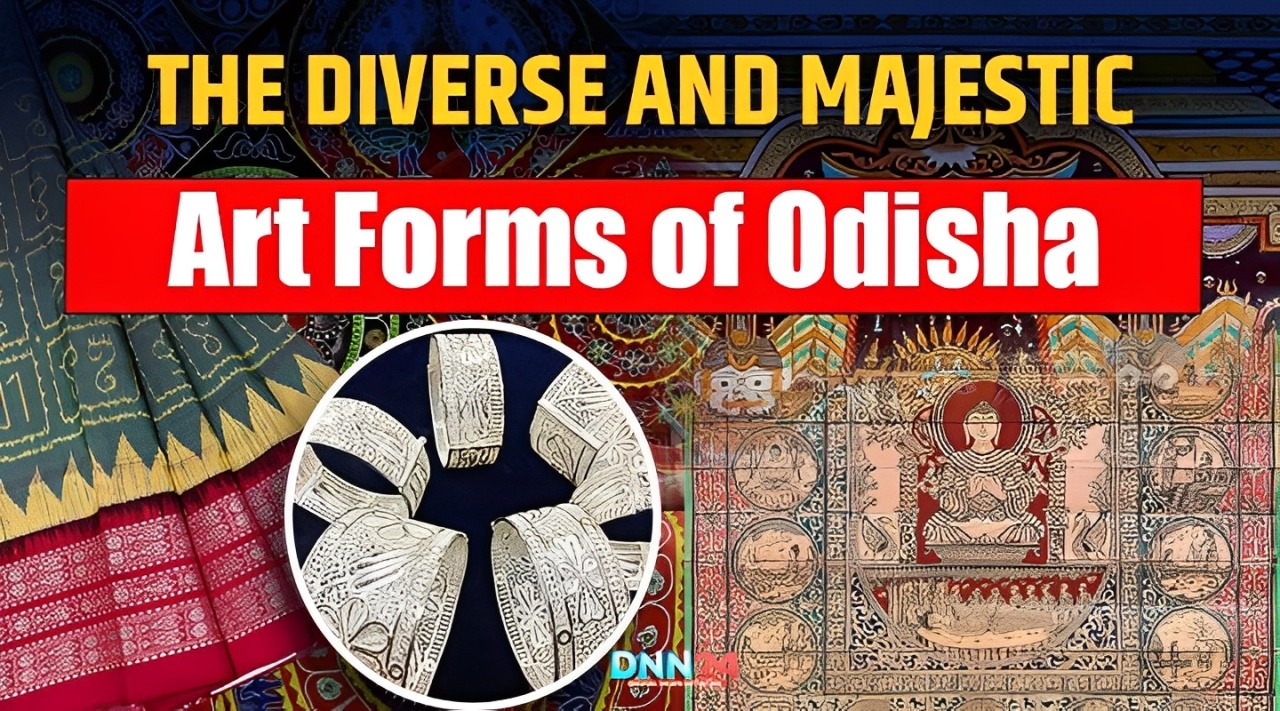Odisha stands out in east India as a region well known for its extensive cultural value that includes many artistic expressions. Known in ancient times as Utkala, meaning “the land of excellence in art,” Odisha boasts a treasure trove of handicrafts and traditional arts that have evolved over generations.
The art forms of the state demonstrate its ancient cultural heritage through beautifully crafted pieces that serve practical purposes. Artisans throughout Odisha establish the state as a thriving center that specializes in distinctive souvenir creations. The story of Odisha’s profound heritage exists through advanced paintings and metal arts along with textiles because each art reflects distinct histories of the state’s legacy.
Odisha Pattachitra
Pattachitra is one of the most ancient and iconic folk art forms of Odisha, celebrated for its intricate detailing and vibrant colors. The term “Pata” means “vastra” or clothing, and “chitra” means painting, indicating that this art form involves painting on cloth. The creative works show stories drawn from three sources including the Mahabharata, Ramayana as well as Puranic literature. Pattachitra artists start their work by strengthening thin gauze fabric by applying tamarind paste and blending it with chalk powder and gum adhesive. The artists work with natural dyes obtained from minerals together with conch shells and plant sources to decorate their finished canvas after it becomes dry.
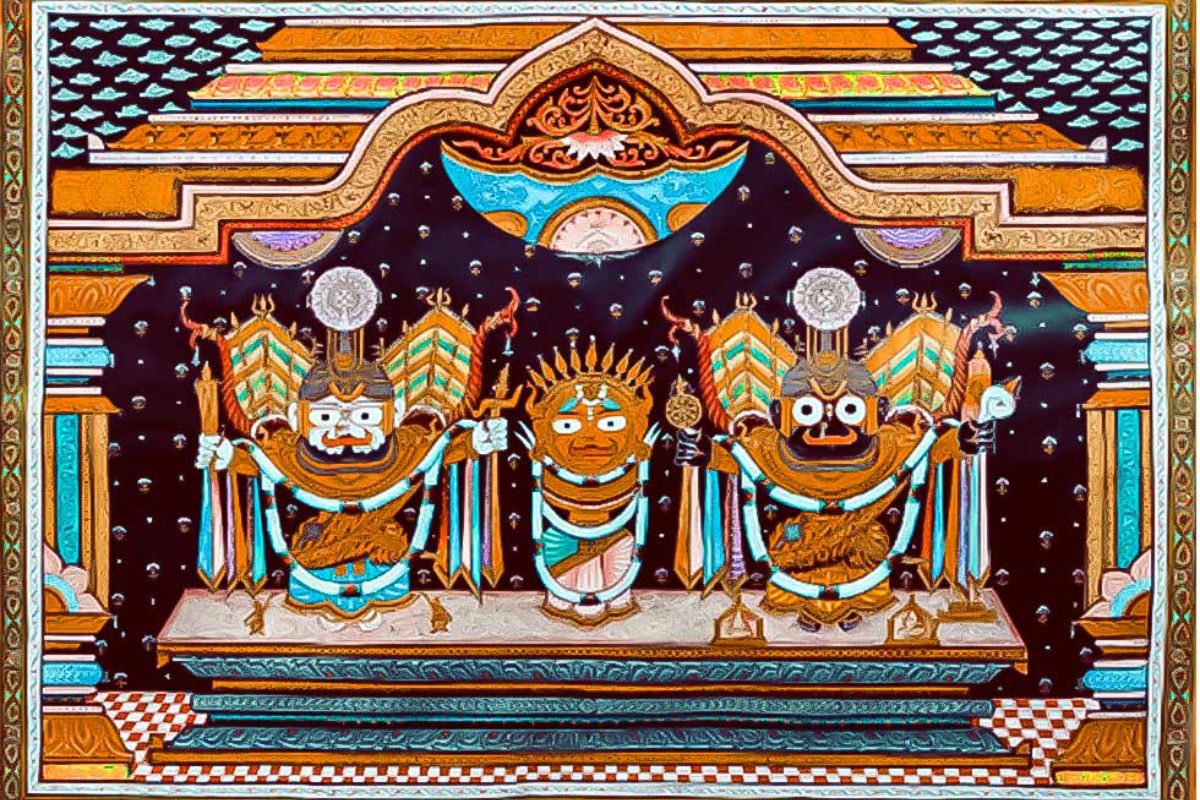
Pattachitra manifests through a poetic and musical fusion because its artists perform songs about what they depict while creating their artwork. A historical connection exists between Pattachitra which dates from the fifth century BC as the grand architectural temples of Puri, Konark, and Bhubaneswar spread its popularity. After the 18th century temples and maths adopted the paintings which received widespread use and established their unique style due to the founding of Jagannath Temple. The cultural heritage of Odisha includes Pattachitra as its key symbol because artists appreciate its artistic elements and therapeutic properties.
Saura Paintings
Saura paintings are a vibrant representation of tribal folk art from Odisha, embodying the voice and cultural beliefs of the Saura tribe. Ikons along with the alternate name of ekons serve religious purposes through traditional wall and fabric applications for deities particularly targeting the guardian deity Idital. Saura artists of the past combined rice powder with cow dung to create their paintings and painted with bamboo sticks as brushes while using natural pigments. Acrylic paint and thin brushes have become the current methods of production for Saura artists when working in commercial settings.

Saura artists showcase their paintings through geometric designs that present tribal folklore alongside divine representations and natural themes including the Tree of Life together with animals and solar and lunar elements. These artistic works serve to please gods in order to provide protection for families against both physical injuries and diseases. The paintings contain backgrounds created from red or yellow ochre earth followed by the application of the scenes. Painting with Saura techniques allows members of the tribe to convey their cultural heritage while safeguarding traditions by visual representation of sacred belief systems.
Talapatra – Palm Leaf Manuscripts
Talapatra, which literally means “palm leaf” in Sanskrit, is a unique and treasured art form in Odisha that involves etching intricate designs and writings on specially treated palm leaves. Palm leaf manuscripts have existed throughout centuries since their inception in historical times to support religious and literary displays. Professional palm leaf preparation includes drying the material before specific treatments make the surface ready for carving. Artists employ stylus tools to carve comprehensive content of ancient scripture alongside mythological stories together with traditional songs on palm leaf surfaces.
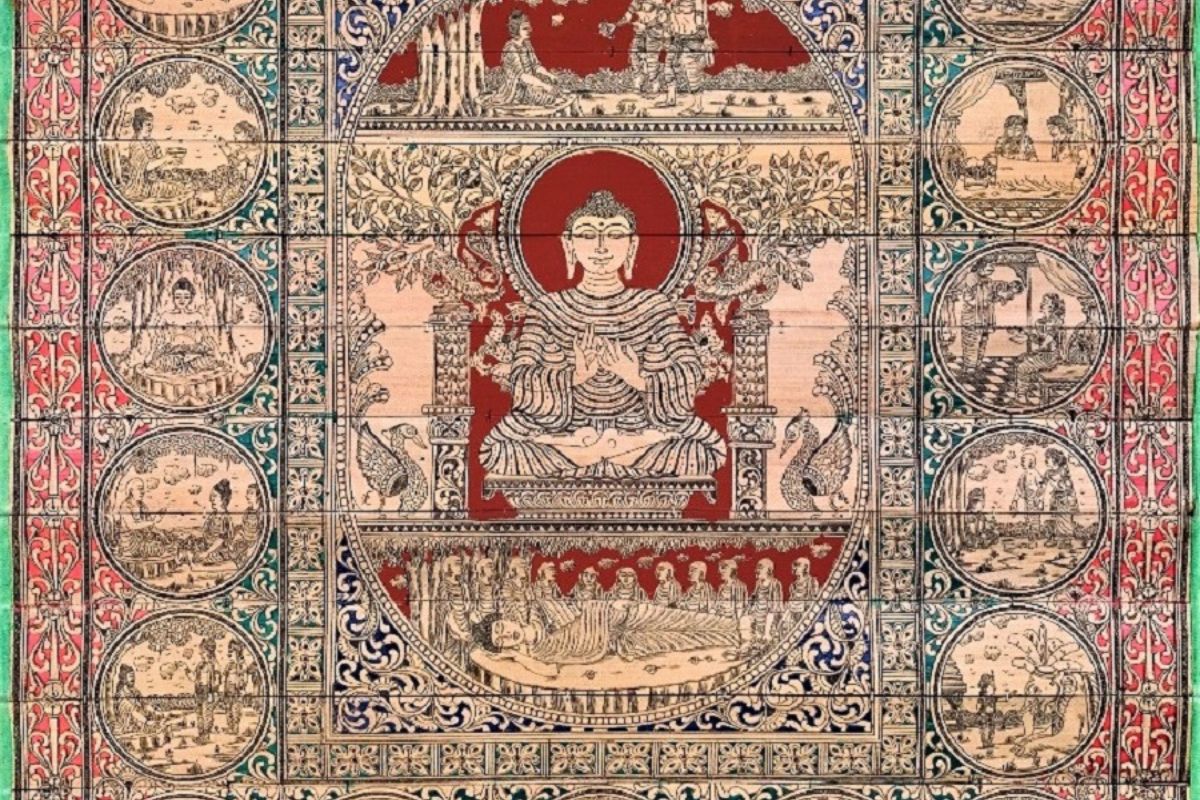
The completion point of engravings marks the beginning of carefully preparing the leaves for stringing methods that support story preservation throughout time. The patience and precision required for Talapatra art make it a true representation of Odisha’s dedication to preserving its cultural heritage. These manuscripts functioned as indispensable documents to preserve knowledge and historical records which people still respect for their skillful creation and culturally important contents.
Handloom Wonders
Odisha’s handloom industry is celebrated for its unique regional weaving traditions, including Sambalpuri, Bomkai, Berhampuri, Nuapatna, and Kotpad, each passed down through generations. Weavers in Odisha employ traditional techniques perfected over centuries, using pit looms, frame looms, and shuttle looms to create intricate designs and patterns. The handloom products of Odisha often feature motifs that reflect the state’s rich cultural and natural heritage, such as flora, fauna, temples, scenes from daily life, and geometric patterns. Sambalpuri sarees are perhaps the most iconic representation of Odisha’s handloom industry, known for their exquisite craftsmanship and vibrant colors.
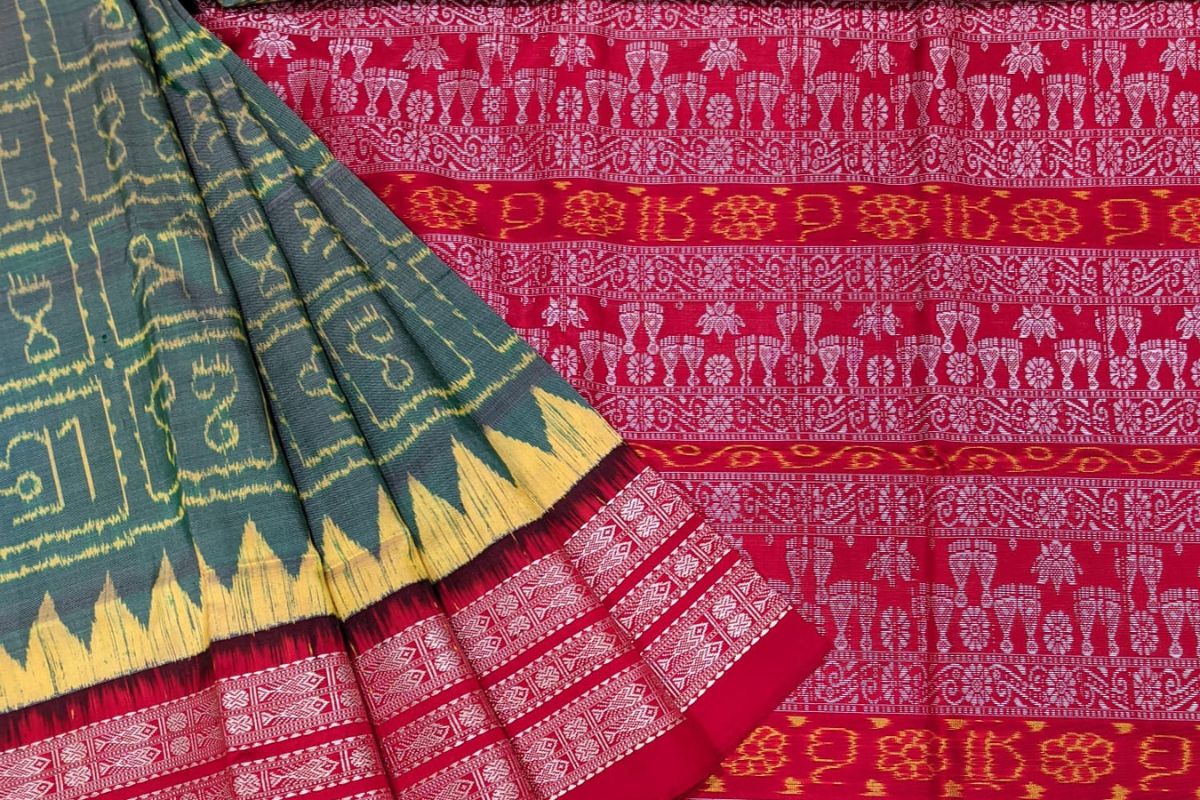
Artisans develop Sambalpuri sarees through Ikat techniques by binding the threads and then applying dye to them before weaving the cloth which generates unique complex patterns. Orissa Ikat, also known as “Bandha of Orissa,” is a geographically tagged product of Odisha since 2007. Every part of the textile looks elegant as it presents curves that create attractive edged contours because of its distinctive style. These handloom traditions not only produce beautiful textiles but also provide livelihoods for numerous artisans and contribute to the cultural identity of Odisha.
Pipli Applique Magic
Artists practice Pipli Applique by creating delicate stitching patterns and delicate shapes and figures on basic fabric materials. A distinctive characteristic of this technique involves colorful decorative elements which incorporate traditional designs with animals and birds and flowers. This enchanting form of fabric-based patchwork originated through the craftspeople of Pipli who reside between Bhubaneswar and Puri while becoming known for its stylized geometric motifs. Traditionally during the Puri Jagannath Rath Yatra people use Pipli Applique artwork for decorating the chariot canopy that holds Lord Jagannath as well as Lord Balabhadra and Devi Subhadra.
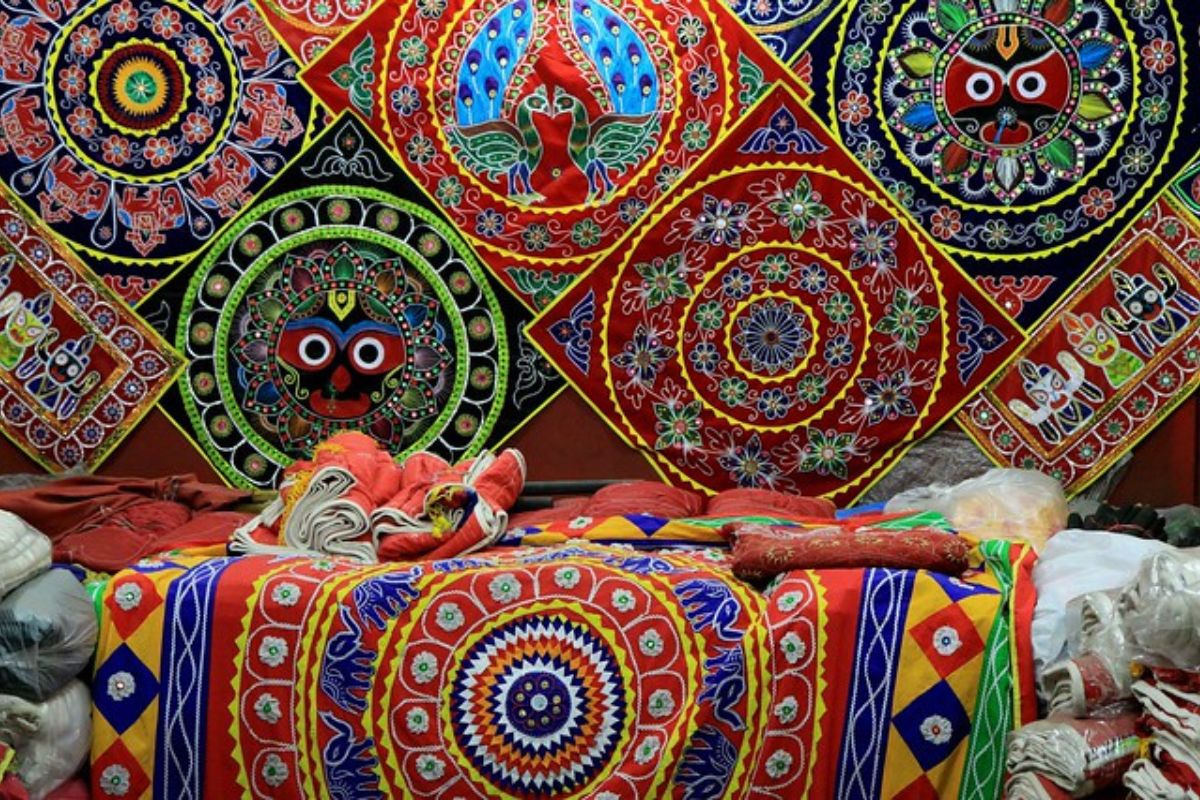
Artisans developed Pipli Applique into multiple household products such as bedspreads and wall hangings and cushion covers and tablecloths since its success in Rath Yatra celebrations. Additionally Pipli Applique appears in fashionable designs as it decorates clothing together with handbags and accessories. Pipli Applique includes motifs that encompass abstract geometry and stylized representations of social figures and natural and mythological characters which makes it a versatile representation of cultural significance in the art world.
Stone Sculptures
Odisha boasts a globally acclaimed tradition of stone carving, with the Sun Temple in Konark standing as its shining epitome. The local skilled artisans proficiently form numerous objects through artful stone sculpture practice that involves multiple stone varieties including sandstone and granite. Through their competence wielders sculpt stunning religious characters and building décor in addition to domestic necessities which demonstrate their impressive artistic potential.

The stone carvings of Odisha, whether finely detailed deities for temples, decorative pieces for historic buildings, or functional items for homes, exemplify the rich heritage and craftsmanship of the region. The art of stone carving in Odisha has reached excellence through centuries of disciplined focus, making it a significant part of the state’s cultural identity. The temples of Konark, Jagannath, and Lingaraj stand as testaments to the beauty and craftsmanship of Odishan stone sculptures, reflecting a tradition that continues to thrive.
Papier Mache Craftsmanship
Papier-mache, or paper mache, craftsmanship is a lesser-known yet highly intricate folk art form in Odisha, holding a special place in the state’s rich cultural heritage. The distinct art technique combines expert knowledge of paper pulp together with glue and supplementary materials to produce decorative functional objects. In Odisha, paper mache artisans use this delicate craft to make masks, decorative figurines, lampshades, and colorful toys. Traditional dance performers and Dussehra festival celebrators extensively use paper mache to construct intricate masks especially for their Ravana performances.
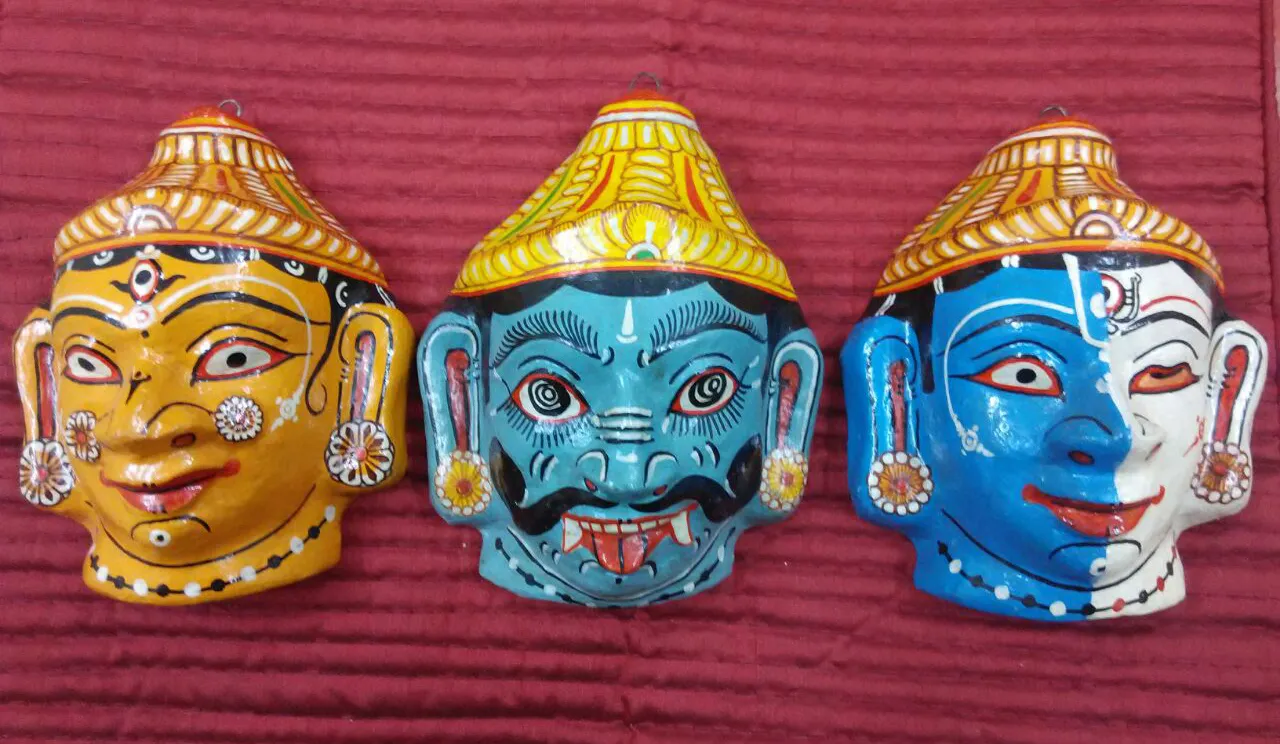
The production begins when paper becomes pulp after soaking in water followed by combining the pulp with adhesive to make moldable clay. Molding the desired shape initiates the process before drying it as step one in an application which requires painting with complex designs and vibrant colors. Papier-mache craftsmanship in Odisha showcases the creativity and resourcefulness of its artisans, who transform simple materials into beautiful and expressive works of art.
Dokra Metal Casting
Dokra metal casting is a unique and ancient art form closely connected to indigenous folk culture in Odisha. Traditional motifs and designs from Dokra artworks derive their motifs from local mythologies together with tribal folklore and stories about daily life activities that frequently present tribal deities along with figures of animals and people and important cultural symbols. This art form not only serves as a means of artistic expression but also as a source of livelihood for many tribal communities in Odisha. Using the lost-wax casting process bronze artisans produce figurines by creating wax models afterward they enclose the models in clay to later heat and melt the wax which leaves room for molten metal.
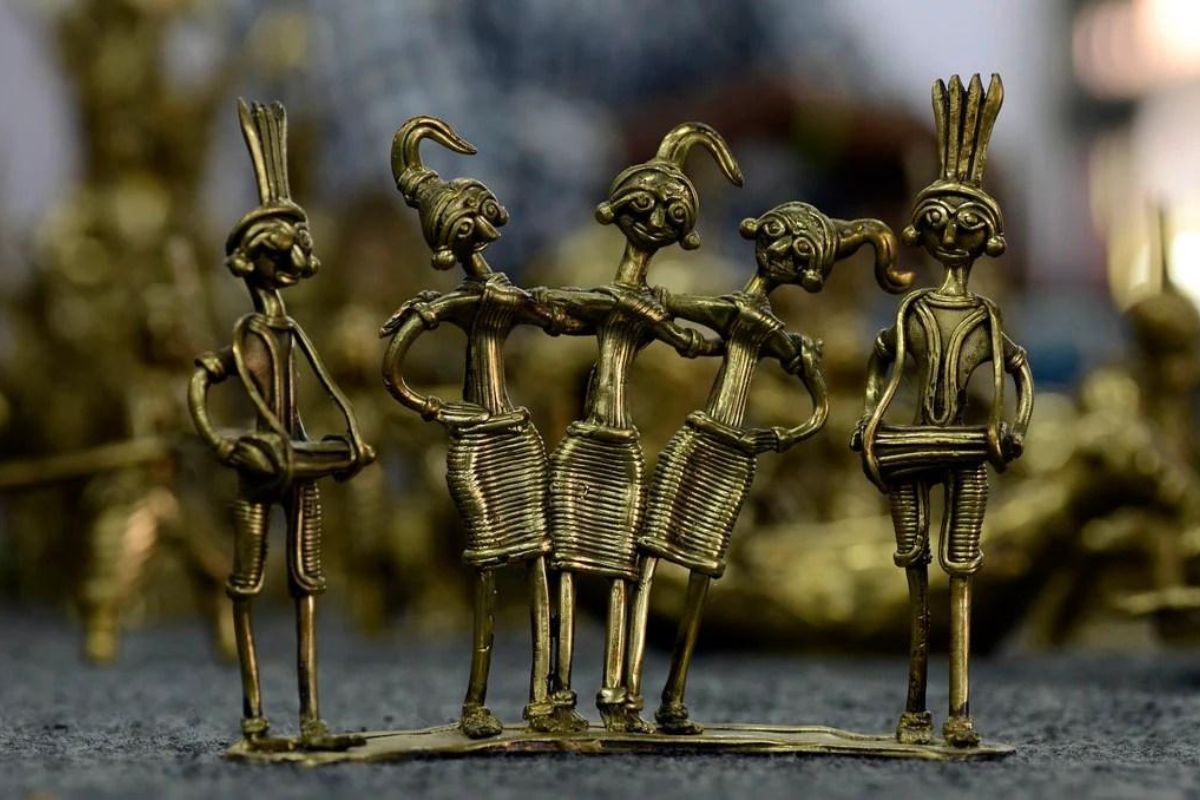
The wax model details get perfectly preserved throughout the casting process which generates exceptional bronze items. The fetching bronze sheen of the objects elevates their traditional motifs with an enduring beauty. Dokra craft stands out because of both its tribal design elements and its rustic charm. The fusion of traditional craftsmanship with innovative techniques makes Dokra metal casting an integral part of Odisha’s artistic identity, preserving cultural narratives and traditions through intricate metalwork.
Silver Filigree Craftsmanship
Silver Filigree, known as ‘Tarakasi’ in Odia, is a shining star in the diverse realm of folk art forms in Odisha. Cuttack serves as the main hub for Silver Filigree through its status as an authentic center of excellence for this difficult form of art. The Silver filigree art consists of delicate silver thread weaves which artisans use to create complex ornate designs. Artisans in Cuttack’s Tarakasi community make delicate silver-handcrafted luxury objects from both customary jewelry like earrings and necklaces and bangles as well as sculpted decorative items that include tiny creatures and decorative showpieces.
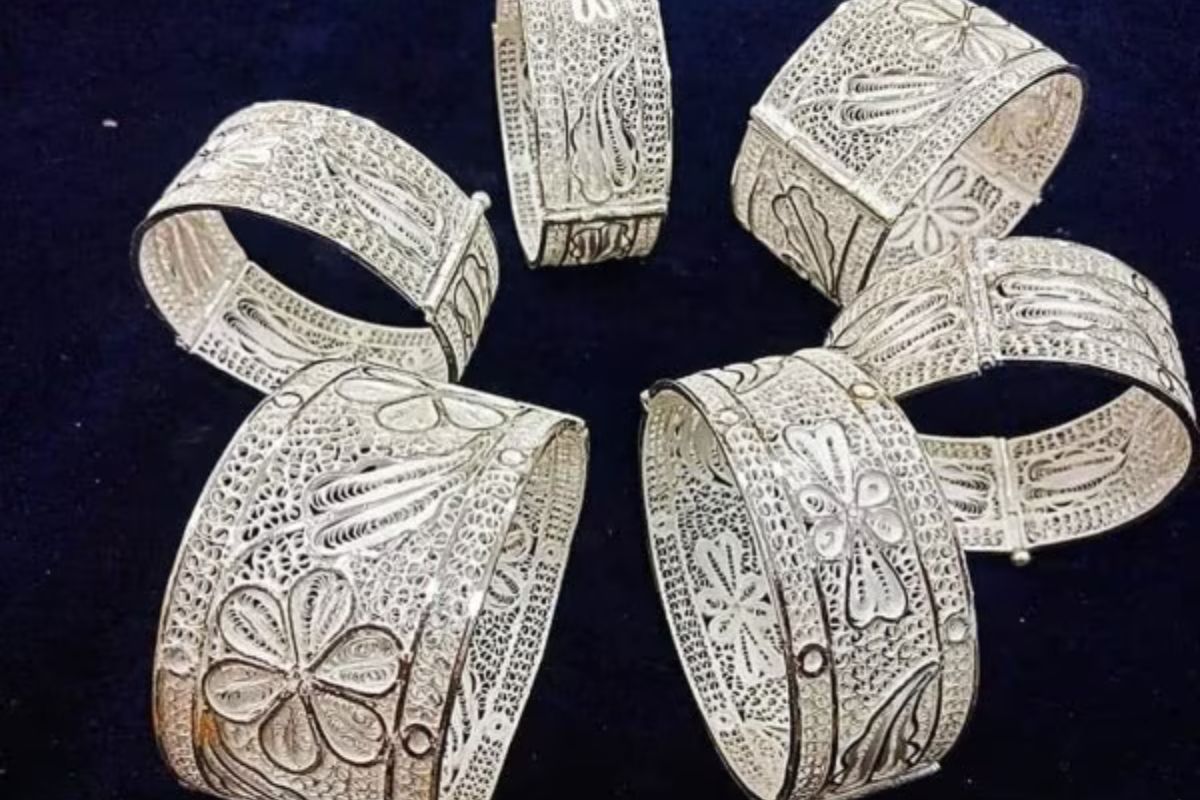
Expert artisans draw beaten silver into fine threads and foils before uniting them to produce beautiful decorative and jewelry items of limitless magnificence. The practice of Silver filigree began in the 15th century and today more than 2000 artisans in and around Cuttack reinstate this ancient art. Various items built by these artisans earn international appreciation because they display refined artwork, luxurious handiwork and precise finishing. The strength of Silver Filigree products becomes harmonized by their qualities of fineness. The threads of silver, though incredibly delicate, come together to create sturdy and durable pieces of art, showcasing the unparalleled craftsmanship of Odisha.
Conclusion
The Indian state known as Odisha draws fame through its abundant cultural richness and extensive artistic varieties. The state of Odisha presents itself through ancient artwork like Pattachitra and Saura as well as beautiful handloom sarees and stone sculptures. Each artistic expression within Odisha reveals significant stories about both historical events and traditional practices of the state. The artisan community of Odisha develops masterful artworks by working with sustainable natural materials through their traditional artisan techniques. Art forms in Odisha operate as main sources of income for many residents while they act as guardians of cultural heritage for the state.
Dokra metal casting along with Pipli Applique and Silver Filigree Illustrations represent different traditional art forms with distinct enchanting characteristics in Odisha. Each artistic expression from Odisha demonstrates extraordinary skills coupled with artistic talent of its artisans. In simple words, Odisha’s art is a treasure that shows the state’s rich culture and history. People should value such cultural treasure because it holds great importance for upcoming generations.
Also Read: The Diverse and Unique Art Forms of Bengal
You can connect with DNN24 on Facebook, Twitter, and Instagram and subscribe to our YouTube channel.

